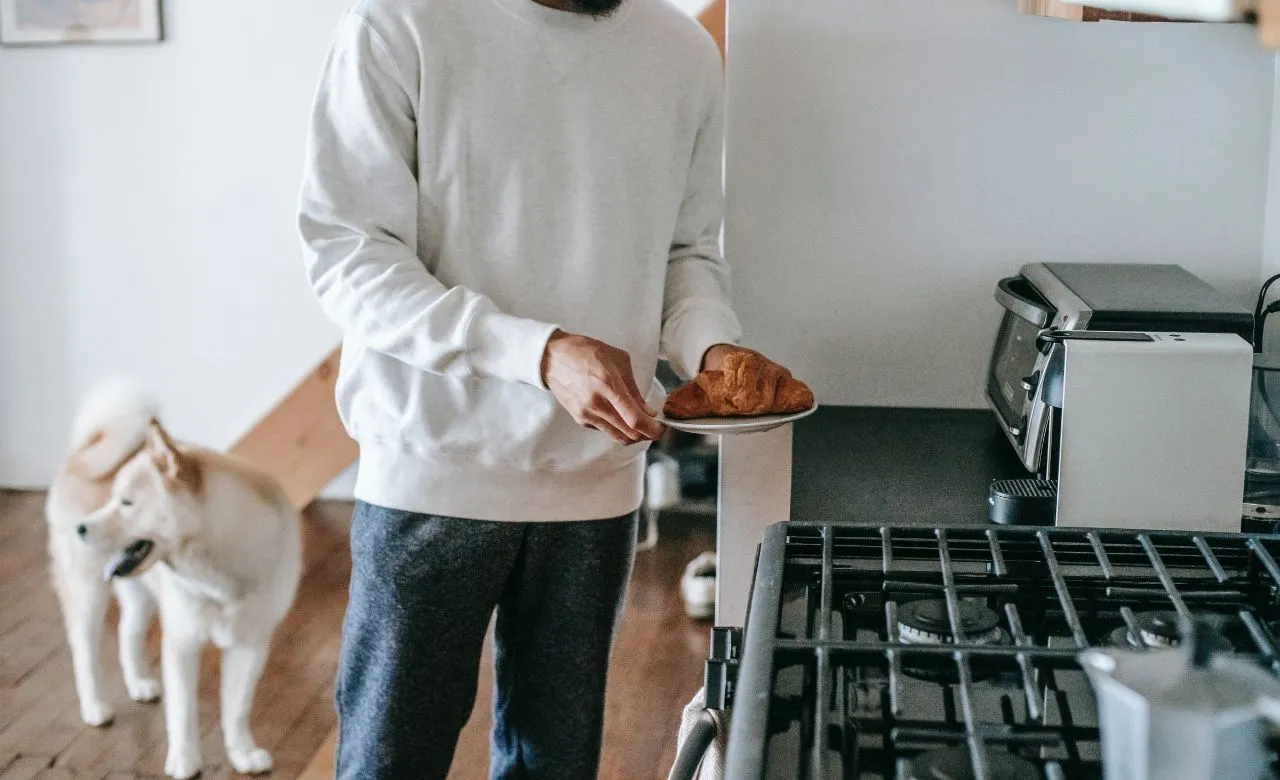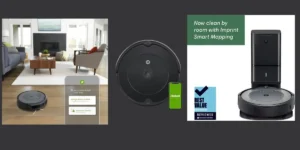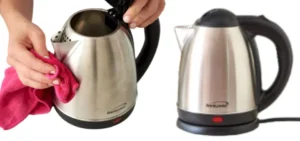To operate a microwave oven, plug it in, place your food inside, and select the desired settings. Press the start button to begin cooking.
Microwave ovens have revolutionized quick and effortless cooking, offering a convenient solution for heating and defrosting a wide range of foods. Equipped with user-friendly interfaces, these ubiquitous kitchen appliances cater to a fast-paced lifestyle where efficiency is key. A well-rounded introduction to operating a microwave should encapsulate its ease of use, versatility in food preparation, and essential role in modern kitchens.
How To Operate A Microwave Oven Step By Step
Understanding the basic functions, such as setting the timer, adjusting the power level, and using pre-programmed cooking modes, is fundamental for anyone aiming to master the art of microwave cooking. Offering the potential to save both time and energy, getting to know your microwave is an investment in culinary convenience.

Credit: www.repairaid.co.uk
Basic Functions And Features Of A Microwave Oven
Unlock the magic of quick cooking with a microwave oven. This kitchen wizard uses high-frequency waves to heat food fast and efficiently. Understanding how it works will make meal prep a breeze. Let’s explore its basic functions and features.
Understanding The Control Panel
Navigating the microwave’s control panel is easy. Familiarize yourself with its layout to master all its functions:
- Start/Stop buttons – Begin or end cooking
- Power level options – Adjust the intensity
- Timer settings – Control cooking duration
- Pre-set programs – Cook specific foods perfectly
- Defrost feature – Thaw frozen food safely
Icons and digital displays guide you. The control panel is your command center for easy meal prep.
Exploring Different Power Levels
The power level affects how fast and evenly food cooks. Most microwaves offer multiple settings:
| Power Level (%) | Use |
|---|---|
| 100% | Full power for quick heating |
| 70% | Cooking without overdoing it |
| 50% | Perfect for defrosting |
| 30% | Slow cooking and keeping food warm |
Adjust the power to fit the recipe. It ensures your food turns out just right.
Setting The Timer
Control cooking time with the timer function. Follow these steps:
- Enter the cooking time.
- Choose the power level.
- Press ‘Start’ to begin.
Use the ‘Add 30 Seconds’ or ‘Quick Minute’ feature for extra time. The timer helps avoid overcooked dishes.

Credit: m.youtube.com
How To Operating A Microwave Oven Safely
Using a microwave oven is like having a magic wand in your kitchen. Heat meals quickly and efficiently—but safety must come first. Learn the ropes to not only cook but also to protect your home and family.
Section about checking for microwave-safe cookware
Checking For Microwave-safe Cookware
Always check cookware before using it in the microwave. Not all plates, bowls, or containers are safe to use.
- Look for a microwave-safe label on the bottom.
- Use ceramics, glass, or microwave-specific plastics.
- Avoid single-use plastics like takeout containers.
Section about avoiding metal objects in the microwave
Avoiding Metal Objects In The Microwave
Metal and microwaves don’t mix. Sparks can fly—literally.
- Take off foil wrapping before heating your food.
- No metals, even tiny pieces like twist ties.
- Check that dishes have no metal trim or parts.
Section about preventing microwave accidents
Preventing Microwave Accidents
Accidents can happen, but preventable when you know how.
- Never start an empty microwave—it can damage it.
- Use the timer. Don’t overheat food to prevent fires.
- Keep the door seal clean for optimal performance.
Supervise kids when they use this kitchen helper. Safe habits mean safe cooking.
Microwave Oven Cooking Tips
Mastering your microwave oven opens up a world of culinary convenience. Follow these cooking tips to get the most out of your microwave. They make meal prep faster, safer, and more delicious. Get your apron ready and let’s dive in!
Understanding Cooking Times And Temperatures
Microwaves cook food differently than traditional ovens. It’s vital to know the right time and temperature. Here’s a quick guide:
- Start low: Use lower settings and increase as needed.
- Check often: Foods cook quickly; avoid overcooking by checking regularly.
- Stand time: Let food stand after microwaving. It continues cooking.
Using Microwave-specific Cookware
Always choose microwave-safe containers. Look for a label or symbol indicating microwave safety. This helps avoid harmful chemicals and container damage. Materials like glass or ceramics work best. Stay away from metals and certain plastics.
Tips For Heating And Defrosting Food
To heat and defrost food evenly, follow these tips:
| Task | Tip |
|---|---|
| Even Heating | Stir or rotate food midway. |
| Defrosting | Use the defrost setting; separate pieces for evenness. |
Cover food to lock in moisture and heat evenly. Use microwave-safe lids or vented plastic wrap. Uncover food carefully to avoid steam burns. With these tips, your microwave meals will be a breeze.

troubleshooting microwave oven
Microwave oven troubleshooting requires a systematic approach to identifying and addressing the underlying causes of these problems. In this guide, we’ll explore common problems that may arise with microwave ovens, and provide insight into possible causes and practical solutions. By understanding how to diagnose and resolve these issues, users can effectively troubleshoot microwave ovens, ensuring optimal performance and extending their lifespan.
Why is My Microwave Not Heating?
When a microwave is not heating up, it means that even though it is running normally, the food inside the microwave is not heating or warming as it should. This problem can occur for various reasons such as problems with the power supply, faulty components such as the magnetron, high-voltage diode, or capacitor, or problems with the door switches, internal fuse, or control board. When a microwave fails to heat food, it indicates that the microwave’s heating mechanism is not working properly, and troubleshooting or repairs may be necessary to address the underlying problem.
How to fix the microwave not heating
1. Check Power Supply:
Make sure the microwave is plugged in and getting power. Check if the circuit breaker hasn’t tripped or if there’s a blown fuse affecting the power supply to the microwave.
2. Door Switches:
Microwaves have door switches that ensure the unit doesn’t operate when the door is open. If these switches are faulty or misaligned, they can prevent the microwave from heating. Ensure the door is closing properly and try pressing firmly on it to see if it makes a difference. If not, the door switches might need to be replaced.
3. Magnetron:
The magnetron is responsible for generating the microwave radiation that heats the food. If it’s faulty or damaged, the microwave won’t heat properly. However, replacing a magnetron can be complex and potentially hazardous, so it might be best to have a professional technician handle this.
4. High Voltage Diode or Capacitor:
Issues with the high-voltage diode or capacitor can also cause heating problems. These components help power the magnetron. A malfunctioning diode or capacitor may lead to a lack of heating. Again, these parts deal with high voltages and require expertise to diagnose and replace.
5. Check Internal Fuse:
There might be an internal fuse that has blown. This fuse is designed to protect the microwave from power surges. If it’s blown, the microwave won’t function properly. Replacing the internal fuse (if applicable) might solve the issue.
6. Control Board:
A malfunctioning control board can also result in the microwave not heating. If the control board isn’t sending the necessary signals to the components responsible for generating heat, it will affect the microwave’s functionality.
If you’re comfortable doing so, you can try checking some of these components (like the power supply, door switches, and internal fuse) yourself. However, for issues related to the magnetron, high voltage components, or control board, it’s often best to contact a qualified technician or the manufacturer’s customer service for proper diagnosis and repair. Remember, microwaves involve high voltages and can be dangerous to work on without proper knowledge and precautions.
Frequently Asked Questions On How To Operate A Microwave Oven
How Does A Microwave Oven Work Step By Step?
Microwave ovens heat food using electromagnetic waves. First, you place food inside the oven. Then, you set the cooking time. The oven generates microwaves that penetrate the food, causing water molecules to vibrate and produce heat, which cooks the food evenly from inside out.
What Are 5 Rules For Using A Microwave Oven?
1. Always use microwave-safe containers to avoid melting and chemical leaching. 2. Pierce or vent plastic wrap to prevent steam buildup and possible accidents. 3. Don’t heat metal objects to prevent sparks and potential fires. 4. Regularly clean the microwave to maintain its efficiency and hygiene.
5. Follow the manufacturer’s instructions for cooking times to avoid overheating food.
What Should I Do For The First Time I Use A Microwave?
For your microwave’s first use, read the manual for specific instructions. Ensure it’s properly installed and the turntable is in place. Test the appliance by heating a cup of water for a short period. Check for any unusual sounds or odors.
Always use microwave-safe containers.
How Do You Put Food In The Microwave?
Open the microwave door and place your food on the turntable. Ensure it’s in a microwave-safe container. Close the door and select the appropriate cooking time and power level. Press start to begin heating. Always check food temperature before eating.
Conclusion
Mastering your microwave oven can simplify cooking and save time. Follow the steps outlined, and with practice, you’ll find it effortless. Remember, safety is paramount, so always adhere to manufacturer guidelines. Embrace this kitchen staple and enjoy the benefits of quick, convenient meals.
Happy microwaving!





